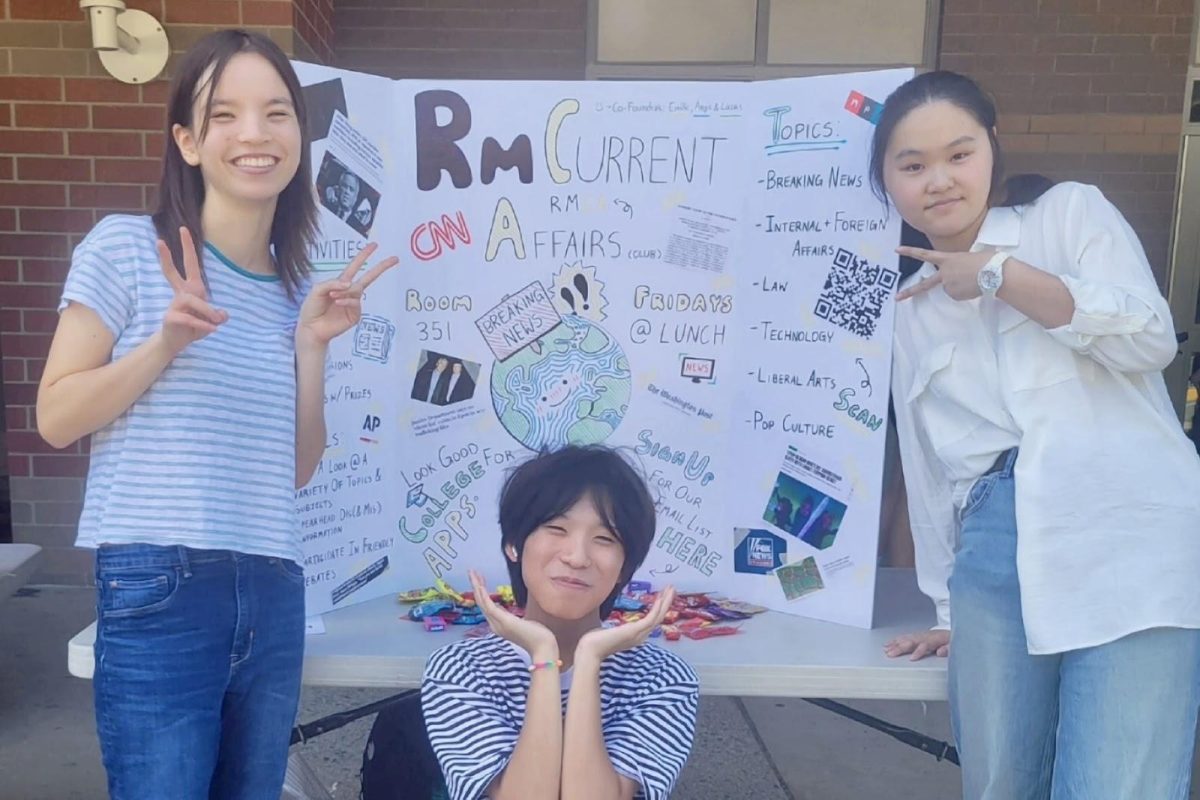Roses. Stuffed animals and cards. Chocolates and jewelry. These familiar images are part of the American Valentine’s Day tradition. From origin stories to customs and traditions, each culture has a unique way of celebrating this universal holiday. Several RM students have experienced the diverse Valentine’s Day traditions outside of the United States.
South Korea
Junior Reyna Choi grew up observing South Korean Valentine’s Day traditions from her parents. In South Korea, Valentine’s Day is also celebrated on February 14. It is customary for the girl to give the guy a gift, usually chocolates or candy.
However, the holiday festivities occur again exactly one month later. On March 14, also known as White Day, the guys reciprocate and give the girls a gift such as white chocolate or marshmallows.
For this day, the word sanbai gaeshi, meaning triple the return, is used as a general guideline for men as they should present a return gift approximately three times the value of the Valentine’s Day gift. “My favorite part is watching my parents try to top each other every year because that’s really the only time they allow each other to exchange gifts,” Choi said.
In addition to gift exchange, couples also spend time together similar to customs in the United States. “My mom and dad always have a date night on Valentine’s Day at my dad’s favorite restaurant,” Choi explained. “And my dad brings my mom flowers on White Day.”
While Valentine’s Day and White Day are the two official couple-based holidays in South Korea, many people also celebrate for an additional ten days each year. These unofficial holidays are similarly spread out on the 14th day of each month, summing to a total of 12 days where couples can celebrate their love.
Each month offers a new approach for couples that is reflective of that month’s atmosphere. “My favorite is day is Diary Day in January,” Choi said. “On this day, couples exchange notebooks that mark the beginning of a new year which they later return in December after documenting shared memories and experiences.” These holidays vary largely in theme, from Kiss Day in June to Movie Day in November.
There is even Singles Day in April, when those who are not in a relationship eat a black noodle dish called jjajangmyun. “I think that all the 14th’s are really just about putting a day aside to celebrate how far you’ve come and grown with your partner and committing to getting closer together in the future,” Choi explained.
Choi, who was born in South Korea, has had the opportunity to compare the traditions of both cultures. A major difference is the degree to which couples publicize their relationship. “In South Korea, it is difficult for people who are not active in a relationship to observe others, as celebrations are done more privately in comparison to the U.S.,” Choi explained. Another difference is the meaning behind each activity. “It normally means a lot more if a couple celebrates White Day or Valentine’s Day in South Korea than if they go out for dinner in America,” Choi said.
Latin America
Sophomore Ashley Guevara has experienced the unique traditions of Valentine’s Day in Latin American culture. In Latin American countries, this day is called “El Dia del Amor y la Amistad,” meaning the day of love and friendship. “The idea is that it’s not only a time to appreciate your significant other, but a time to appreciate the relationships you have with people in general,” Guevara explained.
Much like in the United States, people greatly commercialize the holiday. “In El Salvador, where my family is from, people who sell in the markets go all out,” Guevara said.” You’ll see booths filled with all types of flowers, teddy bears, and chocolates.” The commercialization is so great that even people who may not be in relationships are convinced to buy products.
In America, children usually hand out Valentine Cards to their class, but in Latin America, the children play a game called Amigo Secreto, which translates to secret friend. In the game, everyone writes their name on a small piece of paper before putting it in a designated container that is separated by gender. A week before Valentine’s Day, each person draws the name of the person they must give a gift to.
Guevara’s aunt and uncle met through this game. “My aunt and uncle were in the same class in their fourth grade year and coincidentally picked each other’s names,” Guevara said. “After that, my uncle gave my aunt a gift every year until she agreed to date him.”
In addition, Amigo Secreto is more intimate than the exchange of cards in the United States. “In America, everyone in the class expects candy and cards from each of their classmates, but in Latin America, you can only expect one gift,” Guevara explained. “As a result, a lot more effort and consideration is put into making and receiving the gift.” Gifts can include pastries made from home or flowers picked from a garden.
Although Valentine’s Day is celebrated all around the world, each country has their own unique take on the love and romance to demonstrate what this holiday is really about.
Featured graphic courtesy of Lanchi Nguyen.














